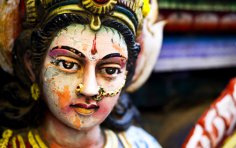
Ancient tomb walls and columns contain information about incredible machines and structures conceived and built by ancient people long ago, thousands of years before the Common Era. How could they have conceived of all this, something even modern science can't always explain?
How could we have forgotten these inventions and discoveries, forgotten them so much that we could later, many, many years later, invent and rediscover them? Or perhaps archaeologists invented all this to add significance to their excavations?
The dating of the finds is also unclear. After all, any account of a historical process is meaningless without a time frame in which events unfold. The history of the recent past is reflected in a multitude of documents and is overloaded with personalities, primarily kings, tsars, and emperors. Unfortunately, for political reasons, history during this period is often incredibly false and biased. Sometimes entire periods of people's lives are omitted from historical records, for example, the history of Rus' before Christianity (as if it never existed). As the patriarch recently explained, some creatures were jumping around either in or under the trees until Greek monks arrived, taught them to speak and write, and explained who they really were.
The ancient period of peoples' history is known primarily through archaeological research, lacking personalities and seemingly objective. The main challenge here is to accurately explain the findings. Their main advantage is that they span the entire period of human existence. But even here, there are flaws. After the discovery and development of the radiocarbon dating method for archaeological finds, it became clear that historians often “approached” events hundreds, and sometimes even thousands, of years earlier. This is how Romano-Germanic historians “work.”
For a long time, climate change was believed to be the main reason for human dispersal across the planet. Excavations have revealed that the main driver of mass migrations is the accumulation of innovations. Bursts of migration followed technological innovations. It appears as if innovations created new opportunities for mass human migration to new territories. Research has shown that in the early stages of human development, the period between breakthrough innovations (such as the manufacture of stone tools and clay products, the use of fire, bows and arrows, etc.) ranged from 1,000 to 5,000 years. Where and how these discoveries occurred, and what happened between them, remains unclear. Unfortunately, later discoveries are primarily related to methods of warfare, although some innovations remained for everyday life.
The most ingenious technical innovation of antiquity is the wheel, which has inspired countless other inventions and discoveries. The Chinese are believed to have invented the wheel, but in fact, they borrowed it from the Aryans, and it was the Aryans who spread the idea of the wheel from the Arctic Circle to Egypt. The fact is that the Russians had their own calendar, according to which it is now the summer of 7521 from the Creation of the World in the Star Temple (S.M.Z.Kh). Tsar Peter I abolished this calendar in 1700 and introduced the calendar from the Nativity of Christ (A.D.), which, with some modifications, is still used today. The church, however, has tried to erase this calendar, which speaks of the antiquity of Russian history, from the people's memory.
However, according to the Vedas and legends preserved in Northern India, where the Aryans carried their legacy from extinction, during their migration south due to the glaciation of the North (the onset of the Great Frost), the Proto-Chinese, led by their leader Ahriman, hindered the Aryans' exodus south with their raids. Then the Aryans (the self-designation of the race, or Rasens) fought the Proto-Chinese, winning a victory, and concluded peace with them in the Star Temple. The Rasens forced the Chinese to build the initial section of the Great Wall, which still stands there today, its battlements facing the Chinese side.
The Chinese pledged never to wage war against the Russians again, a pledge they faithfully upheld for millennia. In exchange, they received steel, syllabic writing, and wheels, which China hadn't had before (they used drags). Over the centuries, the writing system evolved into hieroglyphics, although some of the syllabic writing remained. From those times, the coat of arms of Moscow, depicting a warrior slaying a dragon (and you probably thought it was St. George the Victorious), and the name of the part of Moscow enclosed by a high wall—”Kitai-Gorod”—has survived in Russia.
The Church attempted to appropriate the Russian calendar, but was unable to connect it with Christian events and adopted the simpler A.D. calendar, although even here there is still confusion regarding the dates of Christ's birth, resulting in Catholics and Orthodox Christians celebrating Christmas at different times. The Aryan Rasenians, meanwhile, spread the ideas of steel, the wheel, war chariots, and syllabic writing throughout the world, from the Arctic Circle to Egypt, establishing numerous states along their migration route (the Sumerians, Hittites, Etruscans, and others).
The Egyptian pyramids are considered one of the wonders of the world. But similar structures have been discovered all over the world, including in northern Russia, South America, China, India, and elsewhere.
The innovations received from the Aryans gave a powerful boost to innovation in China, which gave the world paper, the compass, printing, and gunpowder. And much more besides. Ancient Indian texts also describe flying machines. Incidentally, the god Apollo flew to Delphi from Hyperborea (the Greek name for the Aryan homeland) by air and founded a temple bearing his name with an oracle. Apollo was depicted wearing winged sandals.
This is what ancient history looks like if it's depicted truthfully and without exception. And if you don't believe it, dig!





